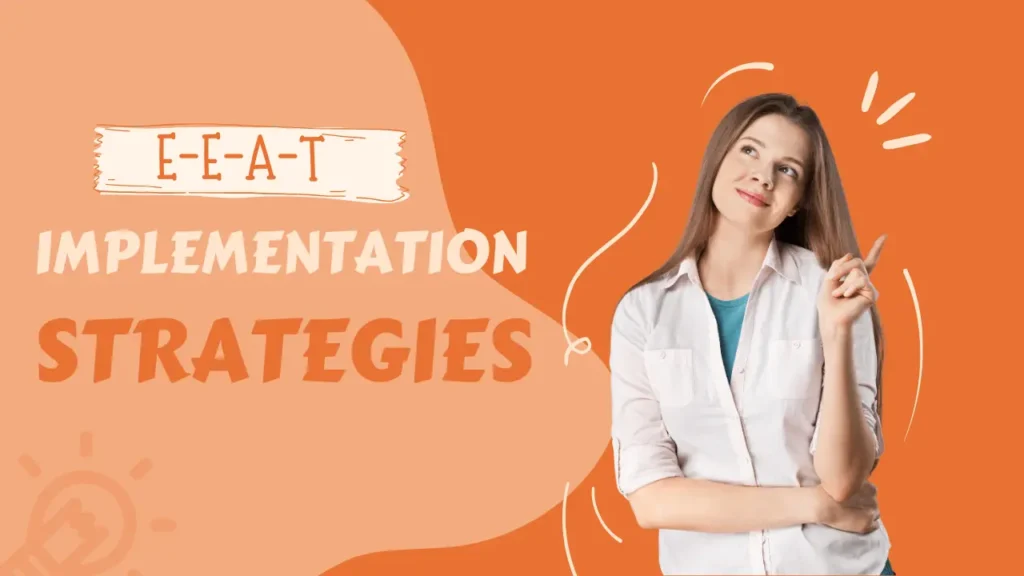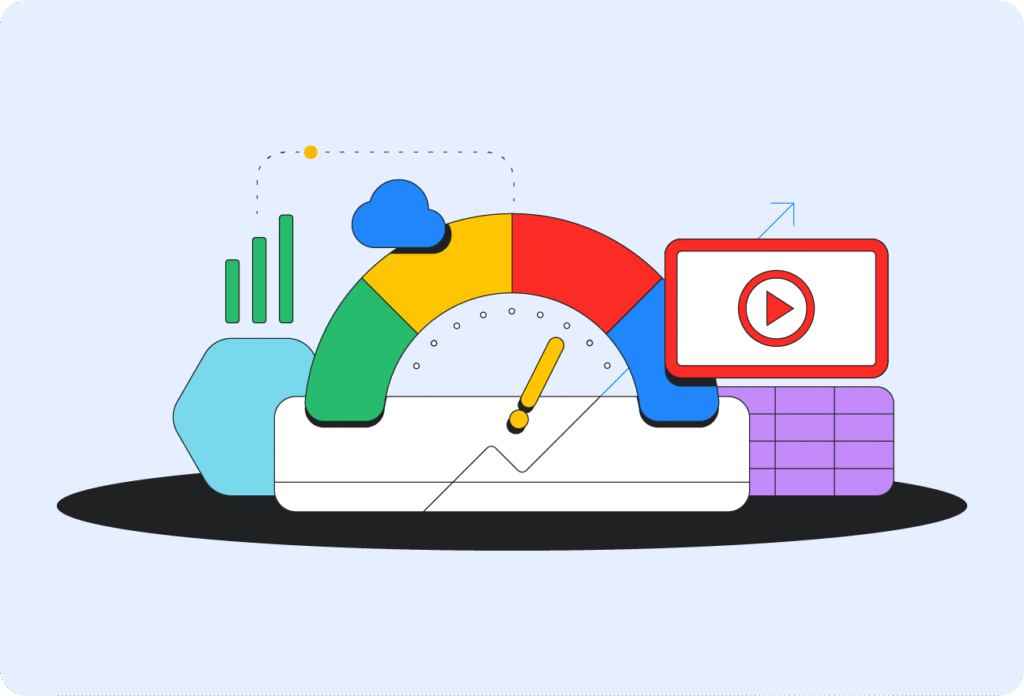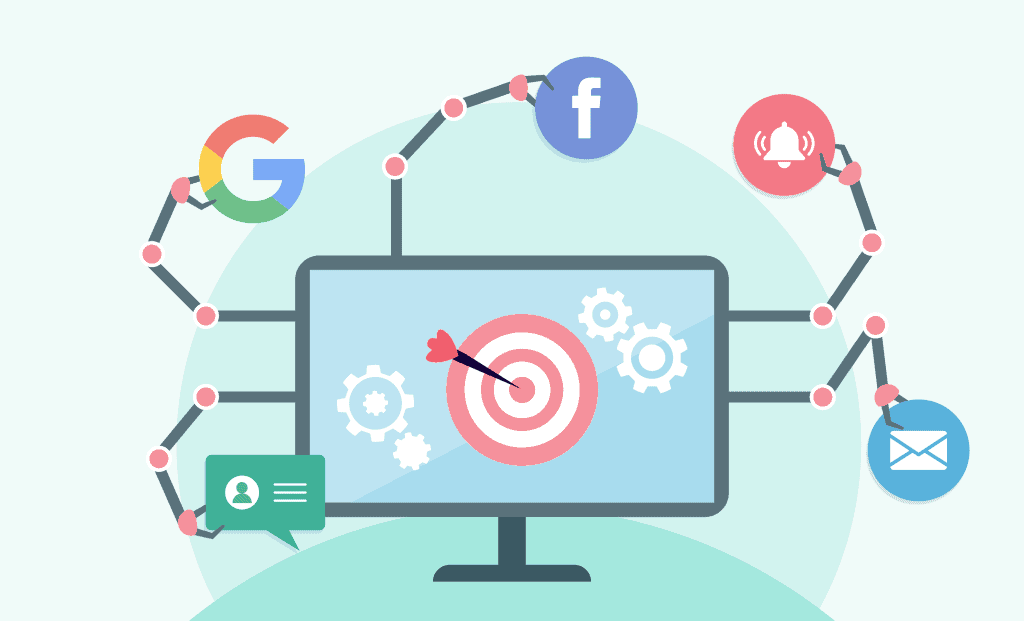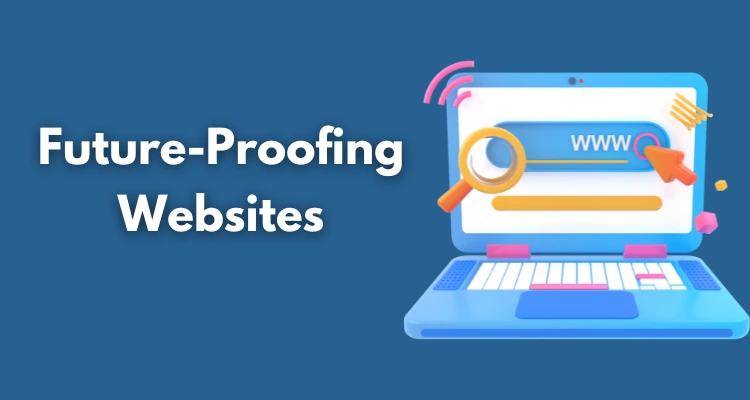Introduction: WebP’s Evolution and Current Landscape
WebP has undergone significant evolution since its introduction by Google in 2010. As we progress through 2025, this versatile image format has become a cornerstone of modern web optimization strategies. With near-universal browser support (over 99% compatibility) and continuous algorithmic improvements, WebP now offers unprecedented opportunities for websites seeking the perfect balance between visual quality and performance.
The format’s ability to provide both lossy and lossless compression, combined with transparency and animation support, positions it as a versatile solution for diverse web content needs. However, simply converting images to WebP format is no longer sufficient. Today’s competitive digital landscape demands sophisticated optimization strategies that leverage the format’s full potential while addressing the nuanced requirements of modern web applications.
This comprehensive guide explores advanced WebP optimization techniques that go beyond basic conversion, offering strategies that can significantly impact your website’s Core Web Vitals, user experience, and ultimately, your business outcomes.
Understanding WebP’s Advanced Compression Technologies
The Science Behind WebP’s Efficiency
WebP‘s compression efficiency stems from several advanced techniques that distinguish it from traditional formats:
Predictive Coding: WebP uses predictive coding that analyzes neighboring pixels to predict values, then encodes only the differences. This approach is particularly effective for images with gradual color transitions and smooth textures.
Transform Coding: The format employs discrete cosine transform (DCT) similar to JPEG but with enhanced coefficient prediction and context modeling, resulting in better compression ratios.
Entropy Coding: WebP utilizes arithmetic coding for entropy compression, which is more efficient than the Huffman coding used in JPEG, providing additional space savings.
Advanced Filtering: The format includes sophisticated filtering techniques that can adapt to image content, preserving important details while compressing redundant information more aggressively.
Read More: How to Optimize Images for SEO in 2025: A Complete Guide
Lossy vs. Lossless WebP: Strategic Selection
The choice between lossy and lossless WebP compression should be based on specific use cases and content characteristics:
Lossy WebP Applications:
- Photographic content where some quality loss is acceptable
- Hero images where file size significantly impacts loading performance
- Content delivery scenarios with bandwidth constraints
- Mobile-first designs prioritizing load speed
Lossless WebP Applications:
- Graphics with text elements that must remain sharp
- Images requiring perfect reproduction (product photos with fine details)
- Screenshots and technical diagrams
- Logos and brand assets where quality cannot be compromised
Quality Parameter Optimization
WebP’s quality parameter operates differently from JPEG’s, requiring calibrated approaches:
Quality Range Analysis:
- Quality 85-95: Suitable for high-end photography and premium content
- Quality 70-84: Optimal for most web photography applications
- Quality 50-69: Effective for thumbnail images and secondary content
- Quality 30-49: Aggressive compression for backgrounds and decorative elements
Content-Aware Quality Selection:
Modern optimization approaches analyze image content to determine optimal quality settings automatically. Images with high-frequency details (textures, patterns) typically require higher quality settings, while images with large flat areas can maintain visual quality at lower settings.
Advanced WebP Implementation Strategies

Progressive WebP Loading
Progressive loading has evolved beyond simple lazy loading to include sophisticated techniques that enhance perceived performance:
Quality Progressive Loading:
<!-- Load low-quality placeholder first -->
<img src="image-quality-20.webp"
data-src="image-quality-85.webp"
class="progressive-image"
alt="Description"
width="800"
height="600">This approach loads a highly compressed version immediately, then replaces it with the full-quality version, providing instant visual feedback while maintaining performance.
Resolution Progressive Loading:
Implement multi-resolution progressive loading where small versions load first:
<picture>
<source srcset="image-200w.webp 200w, image-400w.webp 400w, image-800w.webp 800w"
sizes="(max-width: 600px) 200px, (max-width: 1200px) 400px, 800px"
type="image/webp">
<img src="image-800w.jpg"
alt="Description"
width="800"
height="600">
</picture>WebP Animation Optimization
WebP’s animation capabilities offer significant advantages over GIF while requiring specialized optimization approaches:
Frame Optimization Techniques:
- Keyframe Strategy: Optimize the frequency of keyframes to balance file size with quality
- Temporal Compression: Leverage frame-to-frame similarities for maximum compression
- Alpha Channel Management: Efficiently handle transparency in animated content
Implementation Example:
# Convert GIF to optimized WebP animation
cwebp -q 75 -m 6 -f 50 input.gif -o optimized.webp
# Parameters explained:
# -q 75: Quality setting
# -m 6: Compression method (highest quality)
# -f 50: Filter strength for noise reductionDynamic WebP Generation
Implement server-side logic that generates WebP variants on-demand based on request parameters:
PHP Implementation Example:
function generateOptimizedWebP($imagePath, $quality = 85, $width = null) {
$image = imagecreatefromjpeg($imagePath);
if ($width) {
$originalWidth = imagesx($image);
$originalHeight = imagesy($image);
$height = ($originalHeight * $width) / $originalWidth;
$resized = imagecreatetruecolor($width, $height);
imagecopyresampled($resized, $image, 0, 0, 0, 0,
$width, $height, $originalWidth, $originalHeight);
$image = $resized;
}
// Output WebP with specified quality
imagewebp($image, null, $quality);
imagedestroy($image);
}Performance Optimization with WebP

Core Web Vitals Enhancement
WebP optimization directly impacts Google’s Core Web Vitals metrics:
Largest Contentful Paint (LCP) Optimization:
- Prioritize WebP conversion for hero images and above-the-fold content
- Implement preloading for critical WebP images
- Use responsive WebP images to serve appropriate sizes
Cumulative Layout Shift (CLS) Prevention:
Always specify dimensions for WebP images to prevent layout shifts:
<img src="hero.webp"
alt="Hero image"
width="1200"
height="600"
style="aspect-ratio: 2/1; width: 100%; height: auto;">First Input Delay (FID) Considerations:
Optimize WebP decoding by:
- Using appropriate quality settings to reduce decode complexity
- Implementing efficient lazy loading that doesn’t block main thread
- Prioritizing critical image loading
Advanced Caching Strategies
Implement sophisticated caching strategies specifically for WebP content:
Browser Cache Configuration:
# Apache configuration for WebP caching
<FilesMatch "\.(webp)$">
ExpiresActive On
ExpiresDefault "access plus 1 year"
Header append Cache-Control "public, immutable"
</FilesMatch>CDN Edge Optimization:
Configure CDN edge servers to:
- Automatically serve WebP to supporting browsers
- Cache multiple variants (different qualities/sizes)
- Implement geographic optimization for global audiences
Bandwidth Optimization
WebP’s efficiency becomes even more pronounced with advanced bandwidth optimization:
Adaptive Quality Based on Connection:
function getOptimalWebPQuality() {
const connection = navigator.connection;
if (!connection) return 85; // Default quality
const downlink = connection.downlink;
if (downlink < 1) return 60; // Slow connection
if (downlink < 5) return 75; // Medium connection
return 85; // Fast connection
}Network-Aware Loading:
Implement loading strategies that adapt to network conditions:
- Serve lower quality WebP images on slow connections
- Implement progressive enhancement for faster networks
- Use Service Workers to cache optimal variants locally
Read More: How AI is Transforming Content Marketing in 2025
Content-Specific WebP Optimization
E-commerce Product Images
Product images require specialized WebP optimization approaches:
Multi-View Optimization:
- Thumbnail grids: Quality 65-75, prioritizing small file sizes
- Product detail images: Quality 80-90, maintaining detail visibility
- Zoom images: Quality 90-95, preserving fine details for inspection
Color Accuracy Preservation:
For fashion and design products, implement color profile preservation:
# WebP conversion maintaining color profiles
cwebp -q 85 -m 6 -af -metadata icc input.jpg -o output.webpContent and Editorial Images
News and blog content require different optimization strategies:
Reading Experience Optimization:
- Article hero images: Prioritize loading speed with quality 75-85
- Inline images: Balance quality and performance with quality 70-80
- Photo galleries: Implement progressive loading with quality variants
Accessibility Considerations:
Ensure WebP optimization doesn’t impact accessibility:
- Maintain sufficient contrast in compressed images
- Preserve text readability in graphics
- Provide alternative formats for critical accessibility tools
Social Media Integration

Optimize WebP images for social media sharing while maintaining performance:
Open Graph Optimization:
<meta property="og:image" content="https://example.com/share-image.webp">
<meta property="og:image:type" content="image/webp">
<meta property="og:image:width" content="1200">
<meta property="og:image:height" content="630">Platform-Specific Variants:
Generate optimized variants for different social platforms:
- Facebook: 1200×630 pixels, quality 85
- Twitter: 1200×675 pixels, quality 80
- LinkedIn: 1200×627 pixels, quality 85
Read More: Automated AI Workflows: Transforming Optimization in 2025
Measuring WebP Optimization Success
Performance Metrics
Track key performance indicators specific to WebP implementation:
Technical Metrics:
- File Size Reduction: Compare WebP files to original formats
- Load Time Improvement: Measure impact on page load speeds
- Core Web Vitals: Monitor LCP, CLS, and FID improvements
- Bandwidth Savings: Calculate total data transfer reduction
User Experience Metrics:
- Bounce Rate Changes: Monitor user engagement improvements
- Conversion Rate Impact: Measure business outcome improvements
- Page Depth Increase: Track deeper site engagement
- Mobile Performance: Specifically monitor mobile user experience
Advanced Analytics Implementation
Implement comprehensive tracking for WebP optimization results:
Google Analytics 4 Configuration:
// Track WebP image load performance
function trackWebPPerformance(imageSrc, loadTime) {
gtag('event', 'webp_image_load', {
'custom_parameter_1': imageSrc,
'custom_parameter_2': loadTime,
'event_category': 'performance',
'event_label': 'image_optimization'
});
}Real User Monitoring (RUM):
Implement RUM to track actual user experience with WebP images:
// Monitor WebP decode performance
const observer = new PerformanceObserver((list) => {
list.getEntries().forEach((entry) => {
if (entry.name.includes('.webp')) {
console.log('WebP Load Time:', entry.duration);
// Send to analytics
}
});
});
observer.observe({entryTypes: ['resource']});Troubleshooting Common WebP Issues
Browser Compatibility Challenges
While WebP enjoys broad support, implement robust fallback strategies:
Progressive Enhancement Approach:
<picture>
<source srcset="image.webp" type="image/webp">
<source srcset="image.jpg" type="image/jpeg">
<img src="image.jpg" alt="Description" width="800" height="600">
</picture>JavaScript Detection Method:
function supportsWebP() {
return new Promise((resolve) => {
const webP = new Image();
webP.onload = webP.onerror = () => {
resolve(webP.height === 2);
};
webP.src = 'data:image/webp;base64,UklGRjoAAABXRUJQVlA4IC4AAACyAgCdASoCAAIALmk0mk0iIiIiIgBoSygABc6WWgAA/veff/0PP8bA//LwYAAA';
});
}Quality Optimization Challenges
Address common quality-related issues:
Artifact Management:
- Implement content-aware quality adjustment
- Use preprocessing filters to reduce compression artifacts
- Apply sharpening filters selectively to maintain detail clarity
Color Space Considerations:
Ensure color accuracy across different display technologies:
# Convert with sRGB color space maintenance
cwebp -q 85 -m 6 -af -crop 0 0 800 600 -metadata icc input.jpg -o output.webpRead More: The Ultimate Guide to Image Compression in 2025: Technologies, Techniques, and SEO Impact
Future-Proofing Your WebP Strategy

Emerging WebP Enhancements
Stay prepared for upcoming WebP improvements:
WebP2 Development: Google continues developing next-generation WebP formats with improved compression efficiency and new features.
AI-Enhanced WebP: Integration of machine learning for automatic quality optimization and content-aware compression.
HDR WebP Support: Enhanced support for high dynamic range content and wide color gamuts.
Integration with Modern Frameworks
Implement WebP optimization within popular development frameworks:
React/Next.js Implementation:
import Image from 'next/image'
function OptimizedImage({ src, alt, ...props }) {
return (
<Image
src={src}
alt={alt}
formats={['webp', 'jpeg']}
quality={85}
loading="lazy"
{...props}
/>
);
}WordPress Integration:
// Add WebP support to WordPress
function add_webp_upload_support($mimes) {
$mimes['webp'] = 'image/webp';
return $mimes;
}
add_filter('upload_mimes', 'add_webp_upload_support');Conclusion: Maximizing WebP’s Potential in 2025
WebP optimization in 2025 extends far beyond simple format conversion. Success requires a comprehensive strategy that encompasses advanced compression techniques, performance optimization, content-specific approaches, and continuous measurement and refinement.
The most effective implementations combine technical excellence with user-focused outcomes, ensuring that WebP optimization contributes measurably to business goals while maintaining the visual quality that users expect.
Key Implementation Priorities:
- Implement Progressive Enhancement: Always provide fallbacks while leveraging WebP’s advantages
- Focus on Core Web Vitals: Align WebP optimization with Google’s performance metrics
- Adopt Content-Aware Strategies: Tailor compression approaches to specific content types
- Measure and Iterate: Continuously monitor performance and refine optimization approaches
- Plan for the Future: Build flexible systems that can adapt to emerging WebP enhancements
As web technologies continue evolving, WebP remains a crucial component of modern optimization strategies. By implementing the advanced techniques outlined in this guide, you can maximize WebP’s potential to deliver exceptional user experiences while achieving significant performance improvements.
The investment in sophisticated WebP optimization pays dividends through improved search rankings, enhanced user engagement, and ultimately, better business outcomes in an increasingly competitive digital landscape.





